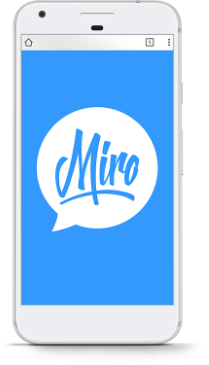Six months ago I first wrote about how I believed the next steps for augmented reality games would be to start cashing in through sponsorship deals with major brands.
As of December 2016, Starbucks and Sprint in the US, as well as Reliance Jio in India, have been announced as official partners to the current biggest augmented reality game, Pokemon Go. The majority of their physical locations will be converted into places of interest within the game.
I’d sit here smugly saying I told you so, but it was fairly obvious it would happen.
There has been no suggestion as to how much these companies have had to spend in order to secure this partner status and receive the benefits, but I can’t imagine it was cheap. The previous six months will have given a good level of data to estimate footfall traffic that the game could potentially drive to the brick and mortar buildings, and for that, they will have paid big money.
And who knows, if it works, this could be even more lucrative than any other form of digital marketing for these brands.
Let’s Talk Money
In October, Nintendo released its second quarter earnings for 2016 where it divulged that it had made a staggering $115 million for licensing fees from the game. Bearing in mind that Nintendo only receives a 19% cut of the game’s total revenue, this means the game’s creator, Niantic Labs, had taken around $600 million since the release.
Incredible figures for a few months work.
In a society where we openly polarise footballers for the obscene amounts of money they earn on a weekly basis, you would have thought perhaps that more people would be discussing this topic a little bit further.
So let’s break Niantic Labs revenue figure down and work out how much this augmented reality game is worth. For the purposes of this exercise we’ll convert the USD figure to GBP at a rate $1 = £0.80 (which is what Google is telling me it is today).
$600 million = £481 million.
Which was generated in 3 months.
That’s £160 million a month.
Or £40 million a week.
Approximately £5.7 million a day.
Just under £250k an hour.
Wow. But hey, isn’t it disgusting that Wayne Rooney earns a similar amount in a week! (For those wondering, it would take Rooney around 35 years, with a contract of £260,000 a week, to earn what Niantic have done in the last three months).
Maybe that’s the problem though, mention Rooney and you can instantly picture a face that you can attach the anguish to. It’s worth noting that I don’t actually have an issue with how much footballers earn, as it’s fans, like myself, who have put them that position by buying into the system, and if my boss was going to offer me £260,000 a week (which he probably won’t) then I wouldn’t be turning it down.
It’s the way that we attack him though, for under performing, not scoring enough goals, not looking he cares and so on, because he will still pocket a king’s ransom every week but we let others get away scot-free.
Niantic Labs is a faceless corporation who have delivered an incredibly popular game, but if reports are to be believed, the game is dying and people are no longer happy with how it performs. Much like our beleaguered men’s national football team captain.
The Last Throw Of The Dice?
So are these new partnerships the last chance for Niantic to squeeze every last penny out of the game before the metaphorical cash cow disappears from our screens for good? Possibly, but I think there is still plenty more to come from this series before we can say that it is well and truly over.
Of course, we can’t rule out the possibility that Pokemon Go is just a testing phase for augmented reality games as rumours of Niantic creating Harry Potter Go refuse to go away. Dipping their toe in augmented waters by testing a popular craze from the early 2000s to ensure they learn from any mistakes and get it right second time round.
Harry Potter Go could potentially be an even bigger market for Niantic to exploit, the book series is still very much fresh in everyone’s minds and with the recent success of the Cursed Child play, it shows there is huge amounts interest and a global audience here.
If this is the case and Pokemon Go is just some sort of beta version for augmented reality games then I think it’s safe to say that $600 million for three months work is going to be just the tip of the iceberg.

